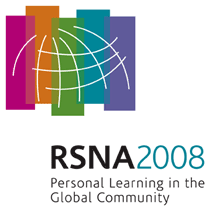
Abstract Archives of the RSNA, 2008
LL-GU2238-R03
Factors Affecting, and Possible Ways for Improving, the Prostate MR Spectroscopic Quality: A Single Institution Experience
Scientific Posters
Presented on December 4, 2008
Presented as part of LL-GU-R: Genitourinary
 Research and Education Foundation Support
Research and Education Foundation Support
Haesun Choi MD, Presenter: Nothing to Disclose
Piyaporn Boonsirikamchai MD, Abstract Co-Author: Nothing to Disclose
Harmeet Kaur MD, Abstract Co-Author: Nothing to Disclose
Valen E. Johnson PhD, Abstract Co-Author: Nothing to Disclose
Michelle L. Underwood, Abstract Co-Author: Nothing to Disclose
Jingfei Ma PhD, Abstract Co-Author: Patent agreement, General Electric Company
Good spectral quality is a pre-requisite for accurate and reliable metabolite quantitation MRS. The purpose of this study is to identify and propose resolutions to the factors that contribute most to spectral quality degradation in clinical prostate MRS.
All MRS images were acquired on a 1.5T scanner using air-filled endorectal coils between 2003-2007. The spectral quality was evaluated subjectively (5-point grading: 5 = best) and objectively (linewidth measurement: Hz). The subjective evaluation was performed blinded to the linewidth results by a consensus of 3 radiologists and 1 physicist. The prostate MRS data acquired with “Perfluorocarbon” filled-endorectal coil was used as a reference for the best quality. A multivariate analysis was performed on the factors such as MRSI acquisition technique, presence of hemorrhage (5-point scoring system), biopsy date, medical and surgical histories. Ordinal logistic regression models and Fisher’s exact test were used to assess the effects of these factors on spectra.
There were 18 patients with poor quality MRS (mean±SD =15.89±2.87 Hz), 55 with good quality (mean±SD =13.33±1.80 Hz) and 41 with superior quality (mean±SD =8.49±0.84Hz). In all 114 patients, the time between the biopsy and MRSI was ranged 10-402 days, the linewidth 6-22Hz. The degree of hemorrhage was inversely correlated with the time between biopsy and MRSI (p=0.009). No significant association between the degree of hemorrhage or the time between biopsy and MRSI and spectral quality. The spectral quality of the patients with recent hormone treatments and external beam radiation were slightly worse, on average, than others, but without statistically significant difference. Metals were highly associated with the poor spectral quality (p=0.032, Fisher’s exact test).
The presence of hemorrhage had no statistically significant effect on spectral quality. The presence of “air” reduced the spectral quality significantly but with interpretable data in most cases. “Air” in the PROSE volume can be avoided by using a proper oblique positioning of the box.
The study will guide to understand the variables that can affect the clinical prostate MR spectral quality.
Choi, H,
Boonsirikamchai, P,
Kaur, H,
Johnson, V,
Underwood, M,
Ma, J,
Factors Affecting, and Possible Ways for Improving, the Prostate MR Spectroscopic Quality: A Single Institution Experience. Radiological Society of North America 2008 Scientific Assembly and Annual Meeting, February 18 - February 20, 2008 ,Chicago IL.
http://archive.rsna.org/2008/6021040.html


 Research and Education Foundation Support
Research and Education Foundation Support